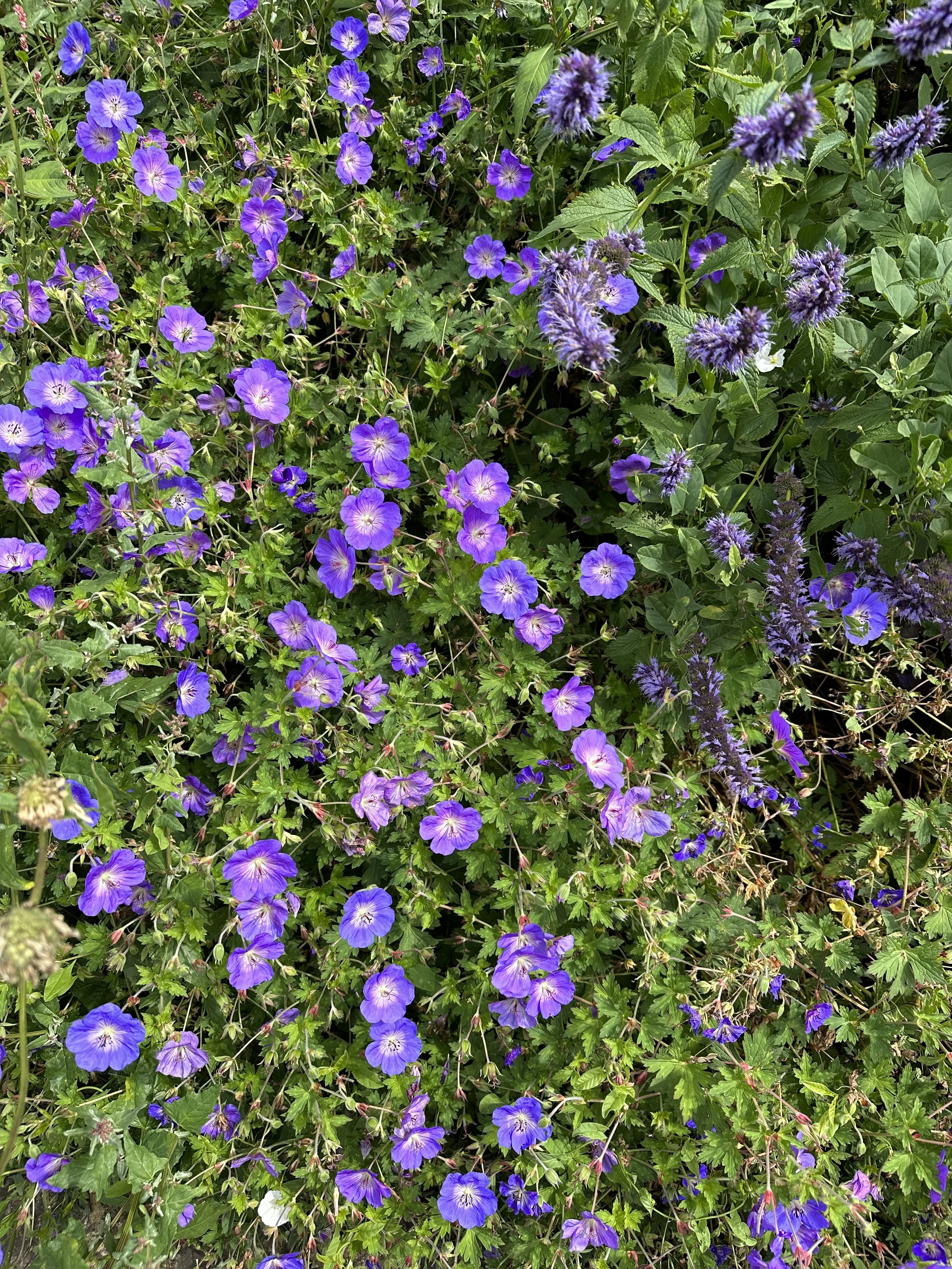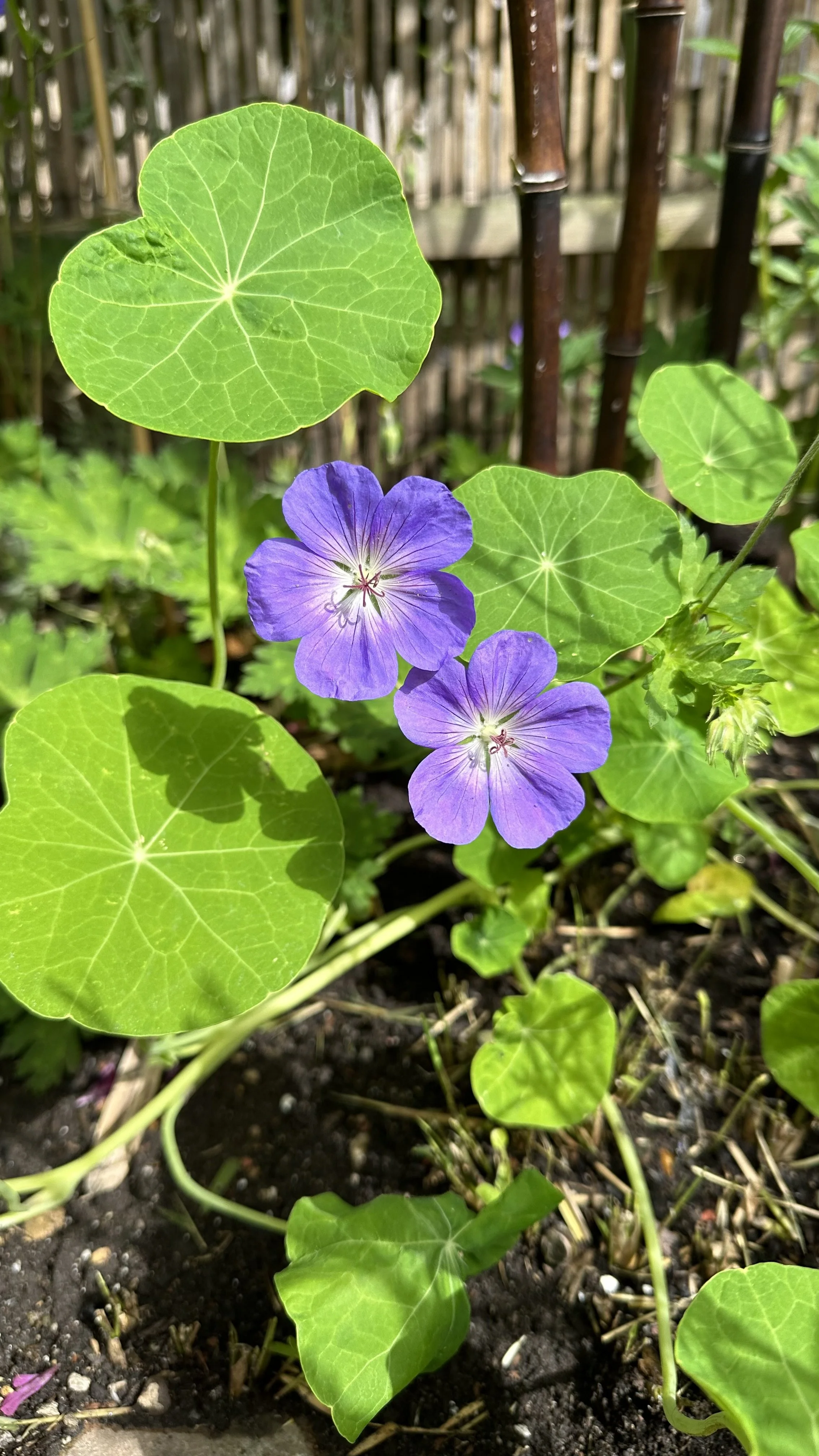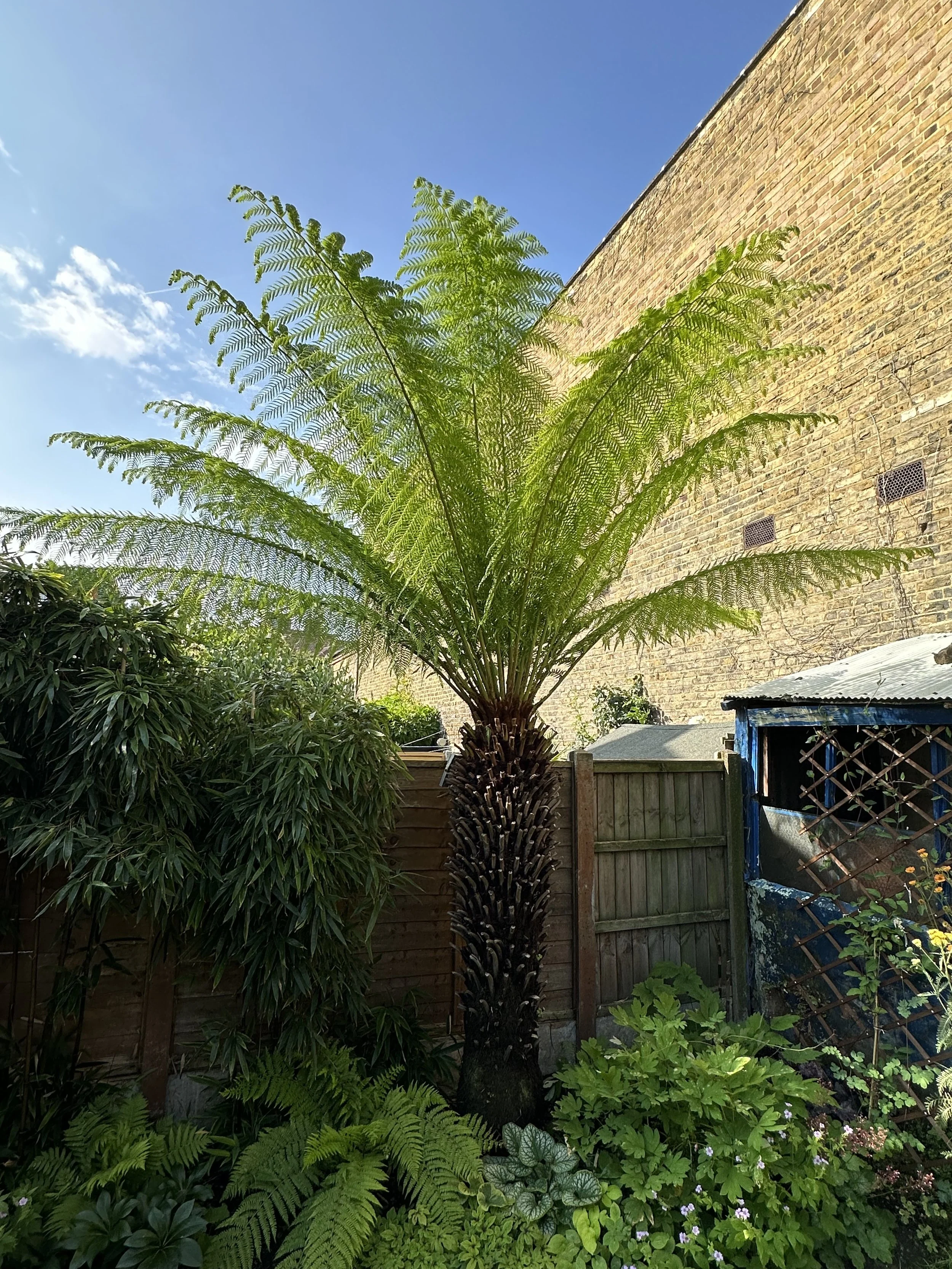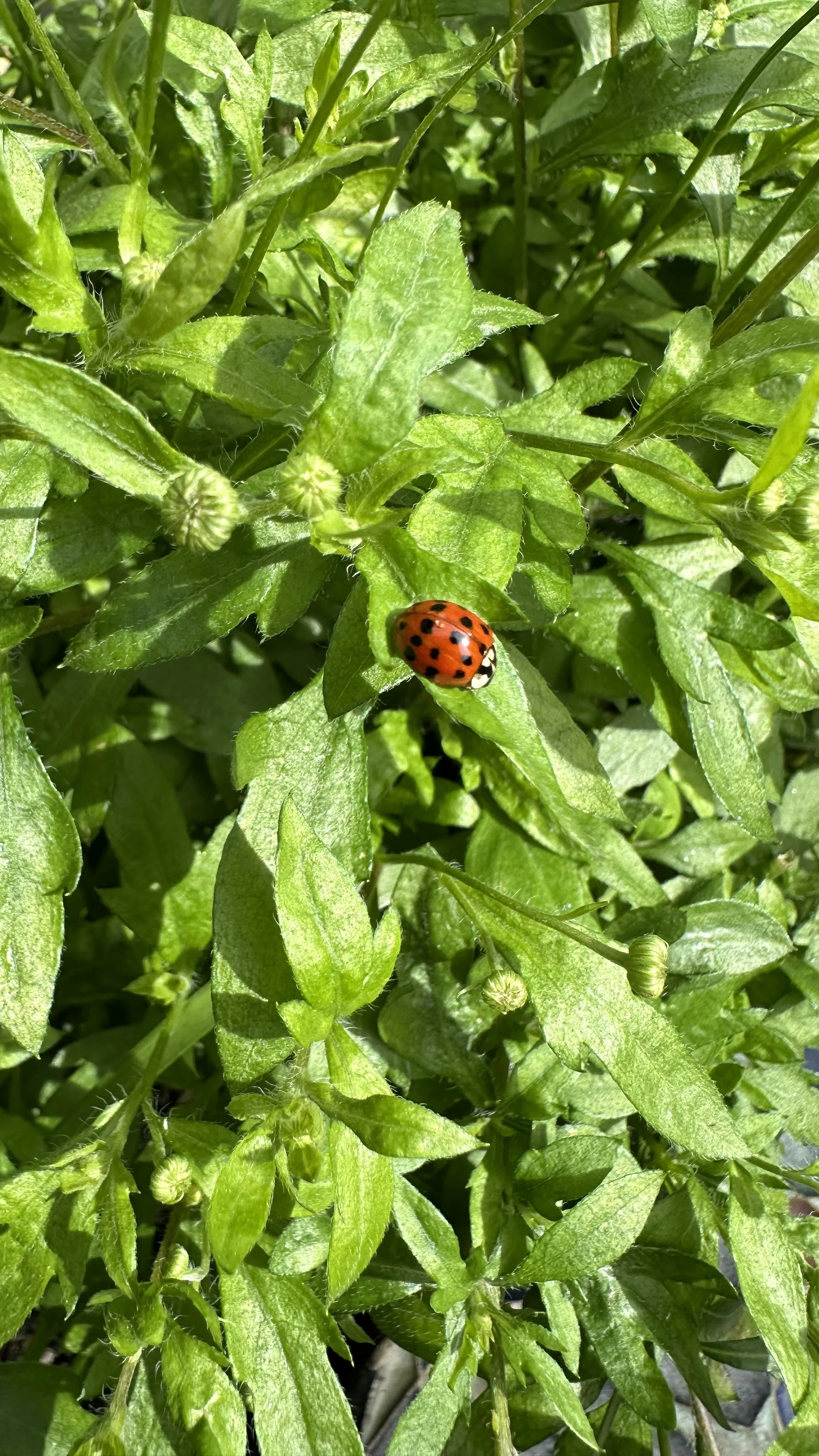Top Slug Resistant Plants to Transform Your Garden
This website is reader-supported - thank you! This post may contain affiliate links. As an Amazon Associate, I earn from qualifying purchases at no extra cost to you.
Gardening can sometimes feel like a tug-of-war between nurturing your plants and fending off unwelcome visitors.
Slugs, in particular, have a knack for turning lush gardens into their personal diners, munching through leaves and flowers with little regard for your hard work.
But fear not!
The secret to maintaining a vibrant, healthy garden lies in choosing the right allies.
Slug resistant plants, slug proof plants, and slug repellant plants are not just wishful thinking; they are your garden's best defense.
This guide is dedicated to introducing you to a variety of plants that naturally deter slugs, ensuring your garden remains a sanctuary for all the right reasons.
By integrating these plants, you're not just protecting your garden; you're creating an environment undisturbed by the slimy challenges that once lurked in the shadows.
For more garden inspiration, check out my guide:
Hardy Geranium is an excellent slug resistant plant.
Why Go Slug-Proof?
The war against slugs in our gardens can feel a bit like an uphill battle.
Just when you think you've protected your precious plants, along come these slimy invaders, ready to turn your hard work into an all-you-can-eat buffet.
It's frustrating, to say the least.
But here's the thing: opting for slug and snail-resistant plants isn't just about avoiding the annoyance and heartbreak of damaged plants; it's about embracing a gardening approach that's both effective and harmonious with nature.
1. Less Damage, More Beauty
First and foremost, slug-resistant plants suffer far less damage from slugs and snails.
This means your garden stays beautiful and thrives, as intended, without unsightly holes in leaves or completely devoured flowers.
It's about keeping your outdoor space looking its best, naturally.
2. Reduce Chemical Use
Many of us strive for a more organic approach to gardening, aiming to reduce or eliminate the use of chemicals.
By planting slug-resistant varieties, we can cut down on the need for slug pellets and other chemical repellents.
This not only benefits the environment but also helps protect the wildlife that visits our gardens, from birds to beneficial insects.
3. Save Time and Effort
Let's be honest, dealing with slugs can be time-consuming.
From nightly patrols to remove slugs by hand to constantly replacing damaged plants, it's a lot of effort.
Choosing plants that naturally deter slugs frees up our time for other gardening activities or simply enjoying the peace and beauty of our outdoor spaces.
4. Encourage Biodiversity
Incorporating a variety of slug-resistant plants can increase the biodiversity of your garden.
This diversity not only adds beauty but also supports a healthier ecosystem.
Different plants attract different beneficial insects and pollinators, contributing to a balanced and thriving garden.
5. A Sustainable Approach
Going slug-proof aligns with sustainable gardening practices.
It encourages us to select plants that are well-suited to our garden's conditions—soil type, moisture level, and climate—reducing the need for external inputs and interventions.
It's about working with nature, rather than against it, to create a resilient and self-sustaining garden.
By choosing slug and snail-resistant plants, we're not just defending our gardens against these common pests; we're making a choice for a healthier, more sustainable, and effortlessly beautiful garden.
For more garden solutions, check out my guide:
Plants That Deter Cats: A Natural Solution to Keep Cats at Bay
The Best Slug Resistant Plants
Creating a slug-proof sanctuary involves choosing the right warriors for your garden army.
These plants not only stand up to slugs and snails but also bring beauty, texture, and interest to your outdoor space.
Here's a closer look at some of the best slug-resistant plants to help transform your garden:
1. Alchemilla Mollis (Lady's Mantle)
Alchemilla Mollis, affectionately known as Lady's Mantle, stands out in the garden with its unique blend of aesthetic appeal and resilience.
This perennial plant is a powerhouse when it comes to adding both beauty and functionality to your outdoor space.
Let's explore what makes Lady's Mantle a must-have in your garden:
Tough Against Slugs
Despite its delicate appearance, Lady's Mantle is a warrior when it comes to slug resistance.
Slugs tend to bypass this plant, likely due to the texture of its leaves and the compounds within them.
This makes Alchemilla Mollis an excellent choice for bordering gardens or interspersing among more slug-prone plants as a natural deterrent.
Delicate Dew Catcher
One of the most enchanting features of Lady's Mantle is its ability to catch and hold dewdrops on its leaves.
The soft, scalloped foliage, with its almost velvety texture, creates a stunning effect in the early morning, as the leaves shimmer with trapped water droplets.
Chartreuse Charm
Lady's Mantle blooms from late spring to early summer, producing clusters of tiny, star-shaped flowers in a lovely shade of chartreuse.
This unusual color provides a striking contrast against the green foliage and complements a wide range of plants in a garden design.
The flowers are not only visually appealing but also attract a variety of pollinators, adding life and movement to the garden.
Versatile and Low-Maintenance
Lady's Mantle thrives in a range of conditions, from full sun to partial shade, and prefers well-drained soil.
Its adaptability make it a favorite among gardeners looking for low-maintenance plants.
Whether used as ground cover, in borders, or as part of a cottage garden, it brings a sense of softness and charm.
Companion Planting and Uses
Beyond its beauty and slug-resistant qualities, Lady's Mantle makes a fantastic companion plant.
Its lime green flowers pair beautifully with purple and blue blooms, creating a cool, soothing palette.
Additionally, the leaves can be used in floral arrangements, adding texture and interest.
Here is the Lady’s Mantle I recommend growing:
2. Hardy Geraniums
When it comes to finding a plant that delivers both in looks and in defense against slugs, hardy geraniums are a great choice.
These robust perennials are a gardener's dream as they are notably resistant to slugs and snails.
Here's why hardy geraniums deserve a prime spot in your garden:
Slug Resistance
What makes hardy geraniums particularly great for gardeners battling slug invasions is their natural resilience.
The foliage of these plants is less palatable to slugs compared to many other garden favorites.
It's believed that the texture and taste of their leaves, possibly combined with the aromatic compounds present in some species, deter slugs from feasting on them.
This inherent resistance makes hardy geraniums a strategic choice for gardeners looking to reduce the impact of slugs without resorting to chemical means.
Unparalleled Diversity
Hardy geraniums, also known as cranesbills, boast an impressive diversity.
With over 400 species, the variety in leaf shape, flower color, and size is truly impressive.
From the delicate blooms of Geranium pratense with its striking blue flowers to the ground-covering Geranium macrorrhizum, which unfurls pink and white flowers with aromatic foliage, there's a geranium for every garden setting.
Garden Versatility
Hardy geraniums are not just about slug resistance; they're also incredibly versatile in garden design.
Whether you're looking to fill a border, create a ground cover that can compete with weeds, or add a pop of color to a rock garden, there's a geranium for the job.
Their ability to thrive in a range of conditions, from full sun to partial shade, and their tolerance for different soil types, make them an adaptable choice.
Easy Care and Maintenance
Another draw of hardy geraniums is their low-maintenance nature.
Once established, they require minimal care.
Regular deadheading can encourage a longer flowering period, ensuring your garden remains vibrant from late spring into early fall.
Additionally, many geraniums can be easily propagated through division, allowing you to expand your collection and share with fellow gardeners.
Supporting Wildlife
Beyond their beauty and practical benefits, hardy geraniums play a role in supporting garden biodiversity.
Their flowers provide a valuable source of nectar for bees, butterflies, and other pollinating insects.
Incorporating these plants into your garden contributes to a healthier, more balanced ecosystem, where both plants and wildlife can thrive.
Here is the Hardy Geranium I recommend growing:
For more tips, check out my guide:
Astrantia is a great slug repellant plant to have in the garden.
3. Astrantia
Astrantia, often referred to as Masterwort, is a perennial that should be on every gardener's radar, especially those dealing with slug issues.
Its unique, star-shaped flowers and attractive foliage make it a standout addition to any garden.
But there's more to Astrantia than meets the eye.
Here's why it deserves a spot in your slug-resistant planting scheme:
Slug and Snail Resistance
Astrantia's resilience extends to its resistance to slugs and snails, making it a valuable ally in the garden.
The texture and taste of its foliage seem to deter these common pests, allowing it to flourish without the damage often seen in more susceptible plants.
This resistance is particularly beneficial in damp, shaded areas where slugs and snails are most prevalent, offering a beautiful solution to a common gardening challenge.
Unique and Captivating Flowers
Astrantia's flowers are truly captivating.
Each bloom consists of a pincushion-like central cluster surrounded by a collar of bracts, giving it a star-like appearance.
The flowers come in shades of white, pink, and red, adding a subtle yet striking color palette to the garden from early summer to late autumn.
These blooms not only add visual interest but also attract a variety of pollinators, enhancing the garden's biodiversity.
Shade Tolerance and Moisture Love
One of Astrantia's greatest attributes is its adaptability, particularly its ability to thrive in partial shade.
While many sun-loving plants struggle in cooler, shadowed areas, Astrantia shines.
It prefers moist, well-drained soil, making it ideal for those challenging spots in the garden that don't dry out easily.
This tolerance for shade and moisture makes Astrantia a versatile choice, perfect for woodland gardens, shaded borders, or as an understory plant in a cottage garden.
Easy Care and Long-lasting Blooms
Despite its delicate appearance, Astrantia is a hardy plant that requires minimal care once established.
It benefits from being divided every few years to maintain its vigor and can be deadheaded to extend the blooming period.
Some varieties even offer a second flush of flowers in late summer or early autumn if deadheaded promptly.
Its long-lasting flowers make Astrantia a favorite for cut flower arrangements, bringing the beauty of the garden indoors.
Here is the Astrantia I recommend growing:
4. Ferns
Ferns occupy a special place in the garden, offering lush, green foliage that provides a tranquil feel.
These primeval plants have thrived on earth for millions of years, bringing a touch of woodland magic to the spaces they inhabit.
Beyond their aesthetic appeal, ferns have a practical side as well; they are remarkably resistant to slugs and snails, making them invaluable in a garden besieged by these pests.
To learn more about growing ferns, check out my guide Evergreen Ferns for Year-Round Interest.
Ancient Resilience
Part of what makes ferns so fascinating is their longevity as a species.
They've adapted to various climates and conditions over the millennia, which speaks volumes about their resilience.
This adaptability extends to their resistance to pests, including slugs.
The texture of fern fronds, which can range from smooth to highly textured, seems to be unappealing to slugs, offering a natural deterrent that protects not only the ferns but also neighboring plants.
Variety and Versatility
The diversity among ferns is incredible, with over 10,000 known species.
They come in an array of sizes, shapes, and shades of green, from the delicate, lace-like fronds of Maidenhair ferns to the bold, architectural presence of the Royal fern.
This variety allows you to use ferns in numerous design scenarios, from ground cover in shady areas to dramatic focal points in a fernery or woodland garden.
Shade Lovers
One of the ferns' most valuable attributes is their love of shade.
In garden spots where sunlight is scarce and many plants struggle, ferns can flourish, bringing life and color to otherwise challenging spaces.
They thrive under the canopy of trees, alongside shaded pathways, or even in the shadowy corners of buildings, making them essential players in shade garden design.
Moisture and Soil
While ferns prefer moist conditions, their specific water and soil requirements can vary significantly among species.
Some ferns, like the Japanese Painted fern, favor damp, rich soil, making them perfect for stream or pond edges.
Others, such as the Southern Lady fern, are more tolerant of dry conditions once established.
This flexibility allows you to select fern varieties that match your garden's existing conditions, minimizing the need for constant soil amendments or watering.
Easy Care and Growth
Ferns are generally low-maintenance plants, requiring little more than consistent moisture and occasional feeding in some cases.
They're perennial, coming back year after year, and some types are evergreen, providing interest even in the winter garden.
For more on this, check out my guide: Evergreen Ferns for Year-Round Interest.
Ferns can also spread to form dense colonies, offering an effective ground cover that suppresses weeds where slugs love to hide.
To learn more about ferns, check out my guide Growing and Caring for Tree Ferns: A Complete Guide.
Here is the fern I recommend growing:
5. Sedums (Stonecrop)
Sedums stand out in the garden for their resilience, ease of care, and, importantly, their natural resistance to slugs and snails.
These succulent plants, belonging to the genus Sedum, are known for their drought tolerance, vibrant flowers, and interesting foliage.
With over 400 species, the versatility and variety of Sedums offer something for every garden design, from ground covers to upright perennials.
To learn more about growing sedum, check out my guide How to Propagate Sedum.
Slug and Snail Resistance
Sedums' thick, fleshy leaves are naturally unappealing to slugs and snails, providing an effective barrier against these common garden pests.
This resistance allows Sedums to thrive without the need for chemical slug repellents or labor-intensive slug control measures.
Planting Sedums around more vulnerable plants can also act as a protective barrier, reducing slug damage throughout your garden.
Drought Tolerance and Easy Care
One of the key characteristics that make Sedums so desirable for gardeners is their exceptional drought tolerance.
Their succulent leaves store water, allowing them to withstand long periods without moisture.
This makes them particularly well-suited for dry, challenging spots in the garden where other plants might struggle.
Additionally, their easy-care nature means they require minimal attention once established, making them perfect for new gardeners and those looking for low-maintenance landscaping options.
Versatility in Garden Design
The diversity within the Sedum family means there's a variety to fit almost any garden need.
Low-growing types, such as Sedum acre (Goldmoss Sedum) and Sedum spurium (Dragon's Blood Sedum), make excellent ground covers, filling in spaces with color and texture.
Taller varieties, like Sedum telephium (Autumn Joy Sedum), provide structure and interest to borders and beds with their upright stems and large flower heads that bloom from summer into fall.
Attracting Pollinators
Beyond their slug resistance and beauty, Sedums play a vital role in supporting garden biodiversity.
Their flowers are a magnet for bees, butterflies, and other pollinating insects, providing a valuable food source late into the season when other flowers have faded.
This makes them an excellent choice for gardeners looking to create a pollinator-friendly space.
Easy Propagation
Another advantage of Sedums is their ease of propagation.
Many varieties can be easily propagated from cuttings, leaves, or divisions, allowing gardeners to quickly expand their collection or share with friends.
This ease of propagation also makes Sedums a cost-effective choice for covering larger areas or tackling garden projects on a budget.
Here is the Sedum I recommend growing:
Euphorbia is a plant that slugs and snails hate.
6. Euphorbias
Euphorbias, also known as Spurge, are among the most versatile plants you can introduce to your garden.
With over 2,000 species ranging from annuals and perennials to shrubs and succulents, this genus offers an incredible variety of forms, textures, and colors.
Euphorbias are particularly noted for their milky sap, which is a natural deterrent to many garden pests, including slugs and snails.
Natural Slug and Snail Deterrent
The natural defense mechanism of Euphorbias against slugs and snails lies in their milky sap.
This sap contains compounds that are irritating to the mucous membranes of many pests, making them a less desirable meal option.
While this characteristic is great for keeping slugs at bay, it's essential for gardeners to handle Euphorbias with care, as the sap can also irritate human skin and eyes.
Unique Appearance and Diversity
What sets Euphorbias apart is their unique appearance.
Many species have foliage that ranges from bright green to purple, with some varieties featuring striking patterns.
The "flowers" of Euphorbias are actually bracts, which can be vibrantly colored, adding to the plant's beauty.
This diversity allows you to select the perfect Euphorbia to complement any garden design, from modern minimalist to traditional cottage gardens.
Drought Tolerance and Low Maintenance
Many Euphorbias are drought-tolerant, thriving in dry conditions where other plants might struggle.
This makes them an excellent choice for water-wise gardens or areas prone to dry spells.
Their low-maintenance nature is great if you are looking for a beautiful yet carefree addition to your garden.
Year-Round Interest
Euphorbias offer year-round interest in the garden.
From the fresh green shoots in spring to the vibrant bracts and foliage in summer and autumn, there's always something to admire.
Additionally, the architectural shapes of some Euphorbia species provide interest even in winter, especially in varieties with persistent stems or evergreen foliage.
Examples of Slug-Resistant Euphorbias
Euphorbia characias (Mediterranean Spurge) is a popular choice with its tall, upright growth and striking heads of greenish-yellow flowers.
Euphorbia amygdaloides var. robbiae (Wood Spurge) is ideal for shady areas, offering evergreen foliage and yellow-green flowers that light up darker corners of the garden.
Euphorbia x martinii is a hybrid with a compact form and beautiful, red-eyed, lime-green flowers, adding a splash of color from spring to early summer.
Safety Tip
When incorporating Euphorbias into your garden, remember to wear gloves and protective clothing when handling or pruning to avoid contact with the sap.
Despite this precaution, their pest-resistant qualities make Euphorbias a valuable addition to any garden.
Here is the Euphorbia I recommend growing:
Equip your urban green space with my recommend top tier tools.
Integrating Slug-Resistant Plants into Your Garden
Embracing slug-resistant plants in your garden design is not just about combating slugs; it's about creating a thriving outdoor space that's easy to care for.
Here are some tailored strategies to seamlessly integrate these hardy plants into your garden, enhancing its beauty and biodiversity:
1. Design with Diversity in Mind
Mixing slug-resistant plants with your other favorites can create a dynamic garden.
Diversity is not only aesthetically pleasing but also beneficial for the ecosystem.
Incorporate a variety of textures, colors, and heights by layering plants—tall ferns as a lush backdrop, mid-height hardy geraniums for splashes of color, and ground-covering Alchemilla mollis to fill in the gaps.
This approach not only deters slugs but also attracts beneficial wildlife, promoting a healthy garden.
2. Utilize Raised Beds and Containers
Raised beds and containers offer excellent protection for more vulnerable plants.
By planting slug-resistant varieties around the edges, you create a natural barrier that deters slugs from reaching the more susceptible species within.
This strategy is particularly effective in vegetable gardens or for protecting beloved annuals.
3. Create Natural Barriers with Ground Cover
Dense plantings of ground cover can act as a natural barrier to slugs, making it difficult for them to navigate through your garden.
Choose slug-resistant ground covers like Sedums or Euphorbias to fill in gaps and reduce the bare soil that slugs find so appealing.
This not only adds beauty and variety to your garden but also helps keep it low maintenance.
4. Incorporate Hardy Perennials
Perennials like Astrantia and Hardy Geraniums are not just slug-resistant; they're also long-living plants that return year after year, reducing the need for annual replanting.
By building your garden around a backbone of these resilient perennials, you ensure its structure remains intact and flourishing, with minimal effort on your part.
5. Embrace the Cottage Garden Style
The informal, dense planting style of cottage gardens is perfect for integrating slug-resistant plants.
This approach allows for a charmingly chaotic mix of flowers, herbs, and vegetables, where slug-resistant varieties can provide protection and support to more sensitive plants.
Plus, the dense planting helps suppress weeds, reducing garden maintenance.
6. Experiment with Texture and Color
Don't be afraid to experiment with the unique textures and colors slug-resistant plants offer.
The silver foliage of some Euphorbias or the purple blooms of Hardy Geraniums can add contrast and interest to your garden.
Playing with these elements can lead to a garden that's both tough against slugs and beautiful.
7. Adopt Sustainable Gardening Practices
Incorporating slug-resistant plants is just one aspect of sustainable gardening.
Complement this approach with organic slug control methods, such as encouraging natural predators and using barriers, to further protect your garden.
This holistic approach supports a balanced ecosystem, promoting the health and growth of your plants.
For more garden inspiration, check out my guide:
Hardy geranium grown in a garden border is resistant to slugs and snails.
FAQ
What plant keeps slugs away?
Lavender is well-regarded for its slug-repelling qualities.
Its strong scent and essential oils are believed to deter slugs and snails, making it a great addition to garden borders or as a protective ring around more vulnerable plants.
Are there any plants slugs won't eat?
While slugs have a wide-ranging appetite, ferns are generally less appealing to them.
They have tough, fibrous textures that slugs find difficult to chew.
What will slugs not crawl over?
Slugs avoid crawling over materials that are abrasive or irritate their soft bodies.
Diatomaceous earth, sharp sand, and crushed eggshells spread around plants can act as effective physical barriers.
Here is the diatomaceous earth I recommend using:
How can you keep slugs away from your tomato plants without using chemicals or traps?
Encircle your tomato plants with a barrier of plants that slugs dislike, such as marigolds or lavender.
Learn more about companion plants for tomatoes with my guide: The Best Companion Plants for Tomatoes.
Mulching with coarse materials can also create a physical barrier that slugs are reluctant to cross.
By combining these strategies with the use of slug-resistant plants, you can create a garden that's not only less appealing to slugs but also more diverse and beautiful.
The key is to work with nature, using plants and materials that naturally deter slugs, to achieve a balanced and thriving garden ecosystem.
For more garden tips, check out my guide:
Wrapping Up
Embracing slug repellent and snail resistant plants offers a smarter approach to garden care, avoiding the need for harsh chemicals.
By selecting the right slug repellent plants and incorporating them into your garden, you create a natural barrier against these common pests.
This strategy is not just about deterring slugs and snails; it's also about promoting a healthier, more sustainable garden ecosystem.
In the quest for a lush, pest-resistant garden, it’s vital to differentiate between effective solutions and quick fixes.
Opting for natural repellents and enhancing soil health through compost are proven methods that support your garden's overall well-being.
Remember, achieving a balance where your garden is unattractive to pests but flourishing with life involves more than just planting the right species.
It encompasses thoughtful lawn care, soil management, and a commitment to organic gardening practices.
This approach not only keeps slugs and snails at bay but also supports a vibrant, wildlife-friendly space.
In summary, integrating slug and snail-resistant plants, along with sustainable garden practices, leads to a robust garden ecosystem.
This method not only addresses pest issues but also contributes to the vitality and beauty of your garden.
For more garden inspiration, check out my guide:
Pin this post to save it for later!













































